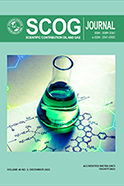Trap Prevention in Machine Learning in Prediction of Petrophysical Parameters: A Case Study in The Field X
DOI:
https://doi.org/10.29017/SCOG.46.3.1586Keywords:
porosity, water saturation, machine learning, reservoir characterization, feature selectionAbstract
Petrophysical parameters such as porosity and water saturation are vital in the petroleum industry for reservoir characterization. These aspects are typically assessed through laboratorium measurements of core samples or intricate petrophysical calculations. Machine Learning (ML) offers a cost-effective and efficient approach as an alternative to conventional methods of predicting those parameters. However, developing ML models can be prone to the invisible traps such as overfitting, underfitting, feature selection, and feature importance. This study is intended to share how to identify the traps and its mitigation by establishing a synergistic workflow between ML and petrophysical theory. A model was developed based on data from several wells in X field, where they are randomized and split into test and train data. Well-log normalization preceded data splitting, and input features were normalized with outlier removal. A feature selection function was then employed to choose a specific amount of log data. Finally, the model selection function identified the highest-scoring model. Without a proper workflow, overfitting, irrelevant feature selection, and imprecise ranking issues emerged. However, with the proper workflow, these invisible traps were mitigated, even with a relatively small dataset. The final model could accurately predict porosity and water saturation
References
Akkurt, R., Miller, M., Hodenfield, B., Pirie, I., Farnan, D., & Koley, M. (2019). Machine learning for well Log Normalization. Day 3 Wed, October 02, 2019.
Al-Qahtani, F. A. (2019). Porosity distribution prediction using artificial neural networks. West Virginia University Libraries.
Aminzadeh, F., & Dasgupta, S. N. (2013). Reservoir Characterization. In Developments in Petroleum Science (pp. 151–189). Elsevier.
Andersen, P. Ø., Skjeldal, M., & Augustsson, C. (2022). Machine learning based prediction of porosity and water saturation from Varg field reservoir well logs. Day 4 Thu, June 09, 2022.
Brodeur, Z. P., Herman, J. D., & Steinschneider, S. (2020). Bootstrap aggregation and crossâ€validation methods to reduce overfitting in reservoir control policy search. Water Resources Research, 56(8). https://doi.org/10.1029/2020wr027184
Cai, J., Luo, J., Wang, S., & Yang, S. (2018). Feature selection in machine learning: A new perspective. Neurocomputing, 300, 70–79. https://doi.org/10.1016/j.neucom.2017.11.077
Gonzalez, K., Brusova, O., & Valenciano, A. (2023). A machine learning workflow for log data prediction at the Basin scale. First Break, 41(2), 73–80. https://doi.org/10.3997/1365-2397.fb2023015
Miah, M. I., Zendehboudi, S., & Ahmed, S. (2020). Log data-driven model and feature ranking for water saturation prediction using machine learning approach. Journal of Petroleum Science & Engineering, 194(107291), 107291. https://doi.org/10.1016/j.petrol.2020.107291
Shier, D. E., 2004, Well log normalization: methods and guidelines, Petrophysics, 45(03), 268-280.
Vento, D. D., & Fanfarillo, A. (2019). Traps, pitfalls and misconceptions of machine learning applied to scientific disciplines. Proceedings of the Practice and Experience in Advanced Research Computing on Rise of the Machines (Learning)
Downloads
Published
Issue
Section
License
Copyright (c) 2023 SCIENTIFIC CONTRIBUTIONS OIL AND GAS (SCOG)

This work is licensed under a Creative Commons Attribution 4.0 International License.
Authors are free to Share — copy and redistribute the material in any medium or format for any purpose, even commercially Adapt — remix, transform, and build upon the material for any purpose, even commercially.
The licensor cannot revoke these freedoms as long as you follow the license terms, under the following terms Attribution — You must give appropriate credit , provide a link to the license, and indicate if changes were made . You may do so in any reasonable manner, but not in any way that suggests the licensor endorses you or your use.
No additional restrictions — You may not apply legal terms or technological measures that legally restrict others from doing anything the license permits.














